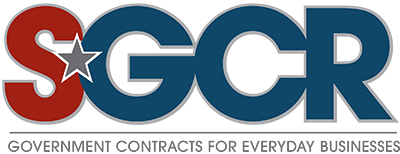Looking for a hub zone map? Understanding the economic development and geographic boundaries is crucial when identifying eligible HUBZone areas for your business. This guide nails down exactly how the HUBZone map works, how to use it, and the pivotal role it plays in accessing federal contracts. Without complex jargon or sales talk, we get straight to the core of these maps, ensuring you have the clear insights needed to navigate the HUBZone program.
-
The HUBZone program provides federal opportunities for businesses in underutilized areas, and the HUBZone map is the essential tool for identifying eligible locations and making strategic decisions about business placement.
-
HUBZone maps are updated periodically with recent Census data impacting designations, and the latest update will provide a stability period for businesses until 2028, offering a transition for those in redesignated areas.
-
Maintaining HUBZone certification requires annual recertification with the SBA and adherence to specific eligibility criteria such as location and employee residency, with resources and assistance available from the SBA and specialists like Select GCR.
Understanding HUB Zones Maps

The HUBZone program, spearheaded by the Small Business Administration (SBA), was designed to stimulate economic growth in historically underutilized business zones through federal contracting opportunities. These zones are highlighted on the HUBZone map, a vital tool that pinpoints the designated areas where businesses can benefit from the program.
The concept of the HUBZone map is simple yet profound. By identifying if a principal office and its employees are located within a HUBZone, businesses can qualify for the HUBZone certification. This certification, supported by state and local officials, opens the door to set-aside contracts, providing a competitive advantage in the federal marketplace.
But what exactly are these maps, and how can businesses make the most out of them? Let’s break it down.
Purpose of HUBZone Maps
HUBZone maps are designed to assist businesses in determining if they’re located in a qualified area, thus positioning them to take advantage of the growth opportunities and benefits offered by the HUBZone Program. In other words, these maps work as a guide, leading a business to areas for development and federal contracting.
Being located in a HUBZone can be a game-changer, opening doors to unique opportunities that could be instrumental in scaling your business. From increased visibility in federal contracting opportunities to the potential for preferential consideration in contract awards, the benefits of establishing yourself within a historically underutilized business zone are extensive.
Components of HUBZone Maps
HUBZone maps are more than just a static image of zones. They are a dynamic tool that utilizes color-coding and patterns to distinguish between diverse HUBZone areas such as qualified census tracts, non-metropolitan counties, and Indian lands. This color-coding system allows businesses to easily identify their status and make strategic decisions about business locations.
The HUBZone map legend is a crucial tool for users to understand the meanings of colors and symbols that differentiate various HUBZone designations. Types of designations identifiable on HUBZone maps include:
-
Census Tract
-
County
-
Indian Land
-
Redesignated Area
-
Disaster Area
-
Governor-Designated Covered Area
Understanding these components is critical for businesses to leverage the benefits of the HUBZone program fully.
Navigating the HUBZone Interactive Map Tool
Once you have a firm grasp of the HUBZone map components, it’s time to learn how to navigate the HUBZone Interactive Map Tool. This tool is designed to check if an address is located within a HUBZone, helping a business determine its eligibility for HUBZone certification.
Think of it as your personal GPS to business growth, guiding you through the intricate network of HUBZone designations. Whether you’re exploring the possibilities of establishing a new location or confirming the eligibility of your existing location, the HUBZone Map Lookup Tool simplifies the process.
Accessing the HUBZone Map Tool
Accessing the HUBZone Interactive Map Tool is as simple as visiting the SBA’s HUBZone program website. The SBA has made this tool a key resource for identifying Historically Underutilized Business Zones, making it easily accessible to all businesses.
In addition to the map tool, the SBA provides a fact sheet that explains the different designations. This fact sheet serves as a guide to assist users in using the map tool effectively, ensuring you have all the information you need at your fingertips.
Using the Map Tool
The HUBZone Interactive Map Tool is user-friendly and designed with businesses in mind. Users can input a business address or GPS coordinates into the map’s search bar to identify potential HUBZone areas, with autocomplete suggestions available for ease of use.
The map tool features enhanced navigation through zoom controls, a street view option, and a feature that pinpoints the user’s current location, provided browser permission is granted. The map legend and interactive features help users understand the map better, making it easier to navigate and interpret the results.
After inputting an address, users can verify the business’s eligibility status on the map and even have the option to create a printable copy of the results for record-keeping.
Interpreting the Results
But what happens after you enter your address into the Interactive Map Tool? The tool uses a Legend with distinct colors and patterns to represent a different HUBZone address, aiding users in comprehending the various zones.
You can switch between standard, light gray, and satellite base maps for better visibility and understanding of the map. The map includes interactive features such as zoom controls, street view options, and a base map toggle, facilitating detailed examination of any specific address. By enabling location services, you can identify if your current address is within a HUBZone area.
The Impact of Recent Census Data on HUBZone Maps

The landscape of HUBZone communities is not static. Recent Census data can significantly impact HUBZone maps, and these changes affect small businesses in various communities. The latest update to the HUBZone map was implemented in July 2023 and will provide a stability period for small businesses until July 2028.
This update reflects new and expired HUBZone designations based on the 2020 Census data. As the landscape shifts, small businesses must adapt to ensure they continue to benefit from the HUBZone program. Let’s delve deeper into these changes.
Changes to HUBZone Designations
The HUBZone map updated on July 1, 2023, initiates a new cycle of designations that will remain in effect for the next five years, with the subsequent revisions scheduled for publication on July 1, 2028. These changes can mean that some areas lose their HUBZone map status but are acknowledged as redesignated areas, allowing them a transition period until July 1, 2026, after which they will no longer qualify.
However, small businesses affected by the July 2023 HUBZone alterations, including Alaska Native Corporation-owned small businesses and Native Hawaiian Organization-owned small businesses, may continue to operate as HUBZone entities until their next annual recertification, and those with ongoing HUBZone contracts are recognized as SBA HUBZone businesses throughout the contract term. The revisions include:
-
The designation of qualified disaster areas
-
Adjustments based on new census data
-
Indian Lands
-
Impacts from the Base Realignment and Closure Act
Adapting to New HUBZone Boundaries
With the changes in HUBZone program, and qualified disaster areas, adaptation becomes crucial for businesses to maintain their HUBZone status. SBA HUBZone-certified firms affected by the 2023 map change are allowed to remain in the HUBZone program until the next annual recertification.
The SBA assists firms that lose their SBA HUBZone eligibility due to map updates, helping with the transition until their next annual recertification. Contracts awarded based on HUBZone status prior to the map update retain their validity and are not impacted by changes in designation. This ensures businesses can continue to reap the benefits of the SBA HUBZone program even amidst changing landscapes.
Benefits of HUBZone Certification for Small Businesses

Getting HUBZone certified is not just about location; it’s about unlocking a wealth of benefits that can propel your business to new heights. HUBZone-certified businesses enjoy a 10% price evaluation preference in full and open contract competitions, which can significantly increase their chances of winning government contracts.
Through the pricing preference, HUBZone-certified business bids gets treated as if it were 90% of the actual bid value, making their offers more competitive against non-HUBZone entities.
But that’s not all; exclusive access to set-aside contracts is another key benefit of certification, allowing a business to compete within a smaller pool of qualified competitors. Beyond the unique HUBZone opportunities, a certified business can continue to compete under other socio-economic programs for which a business qualifies, thus widening their scope for federal business.
Federal Contract Preferences
The HUBZone program offers several benefits to a certified business, including:
-
A federal procurement goal to award at least 3% of all federal prime contracts to HUBZone-certified companies
-
Restricted competition for certain contracts
-
Preference in full and open competitions
These benefits help a HUBZone business access more opportunities and increase their chances of winning government contracts.
The preferential access to government procurement opportunities, provided by the government, can significantly boost small business growth. In fact, federal purchases from HUBZone-certified small firms amounted to $14 billion in the previous year, showcasing significant economic support for disadvantaged areas and the role of community development corporation initiatives.
Access to Set-Aside Contracts
Set-aside contracts are another significant perk for HUBZone-certified businesses. This business is entitled to compete for:
-
Set-aside contracts specifically limited to companies within historically underutilized business zones
-
The HUBZone program aims to award at least 3% of federal contract dollars to HUBZone-certified businesses annually
-
Providing them with set-aside contracts and a 10% price evaluation preference in open contract competitions.
The new HUBZone preview map based on the 2020 Census expands qualifications for additional firms, potentially enhancing their access to federal contracts through certification. This not only increases your chances of securing contracts but also boosts your business’ visibility within the federal marketplace.
Steps to Acquire and Maintain HUBZone Certification
Acquiring and maintaining certification may seem like a daunting task, but the process becomes manageable once you understand the steps involved. To be eligible for HUBZone certification, a business must:
-
Be a small business by SBA standards
-
Be owned and controlled at least 51% by U.S. citizens
-
Have its principal office located in a HUBZone
-
Have 35% of its employees living in a HUBZone
But it’s not just about meeting these requirements; a small business must also apply for HUBZone certification through the SBA’s General Login System and undergo an annual recertification process to demonstrate continued compliance with the program’s requirements. Additionally, businesses need to provide supporting documentation during the application and recertification processes. It’s a continuous journey of maintaining compliance and adapting to changes in the HUBZone landscape.
Application Process
The application process for HUBZone Certification involves a series of steps designed to ensure a small business meets the program’s standards. This includes completing the HUBZone Certification Eligibility Questionnaire, which helps determine eligibility.
In addition to the questionnaire, applicants are required to provide different supporting documentation depending on their business ownership structure, as guided by a provided checklist. The application process includes the following steps:
-
Submit the application electronically via the SBA’s General Login System.
-
Verify the application within two business days.
-
Submit supporting documentation within three business days of the application.
-
Respond to any additional information requests within five business days.
Select GCR can take the burden of applying off your plate
While the application process may seem intimidating, a small business doesn’t have to navigate it alone. Select GCR can help manage the application all the way through approval. This includes compiling all required documents, ensuring no details are missed that could slow down being approved.
Many applicants get rejected due to minor errors and omissions, but with Select GCR managing your HUBZone application, you can avoid these pitfalls and improve your chances of a successful application. After all, you should focus on running your small business while Select GCR takes care of the complexities of the HUBZone certification.
Maintaining Certification
Beyond acquiring certification, maintaining HUBZone status is a continuous effort. A certified small business must confirm their compliance with the 35% employee residency requirement and principal office location on their next annual recertification date following the map update. The SBA conducts program examinations at least every three years and may perform unannounced visits to verify the information provided in the HUBZone application.
Any small business in areas losing HUBZone status need to meet residency and principal office requirements by July 1, 2023, or they must relocate to maintain eligibility. This includes notifying SBA of any major changes such as mergers, acquisitions, or residency compliance issues.
Maintaining certification is not just about preserving your current status, but about continually adapting to ensure your small business remains competitive in the federal marketplace.
Resources and Assistance for HUBZone Businesses

The journey to HUBZone certification and maintaining that status does not have to be a solo venture. The SBA offers specialized resources for any small business seeking HUBZone certification, providing eligibility assistance every Tuesday and Thursday directly from the SBA’s HUBZone office.
In addition to the SBA’s resources, any small business can contact processing specialists at Select GCR for help. The journey to HUBZone certification can be challenging, but with the right resources and assistance, it becomes a navigable path towards business growth and success.
SBA Support Services
The SBA provides an eligibility workbook tool to help potential applicants in organizing and presenting key information concerning their principal office and employee residency requirements. This tool aids with the HUBZone certification by providing a structured format for calculating and preparing necessary applicant details.
Moreover, the SBA offers a supporting documents checklist that is tailored to suit different types of small business ownership structures, noting specific requirements for those applying for HUBZone certification. These resources, coupled with the assistance of Select GCR and their processing specialists, ensure businesses are well-equipped to navigate the HUBZone certification.
Summary
The HUBZone program and its accompanying map offer unique opportunities for small businesses to thrive in the federal marketplace. Understanding the HUBZone map, its components, and how to navigate it can unlock doors to competitive advantages and growth opportunities.
While the journey to HUBZone certification can be daunting, resources and assistance from the SBA and Select GCR make the process more manageable. As the HUBZone landscape continues to evolve, businesses must adapt, ensuring they continue to meet eligibility requirements and maintain their certification. After all, the journey to HUBZone certification is not just about reaching the destination; it’s about navigating the journey for sustained growth and success.
Frequently Asked Questions
How do you find out if you live in HUBZone?
You can find out if you live in a HUBZone by using the HUBZone Certification & Eligibility Map at https://maps.certify.sba.gov/hubzone/.
What is the HUBZone program?
The HUBZone program, led by the Small Business Administration (SBA), aims to stimulate economic growth in historically underutilized business zones through federal contracting opportunities. It is designed to encourage business development in economically distressed areas.
What are the benefits of HUBZone certification?
HUBZone certification offers a 10% price evaluation preference in full and open contract competitions, along with exclusive access to set-aside contracts. These benefits can provide a significant advantage for certified businesses.
How do I apply for HUBZone certification?
To apply for HUBZone certification, you need to meet eligibility requirements and submit an application through the SBA’s General Login System, along with supporting documents like articles of incorporation and lease agreements.
How can I maintain my HUBZone certification?
To maintain your HUBZone certification, you must undergo an annual recertification process where you confirm the employee residency requirement and principal office location. This is necessary to demonstrate continued compliance with the program’s requirements.


